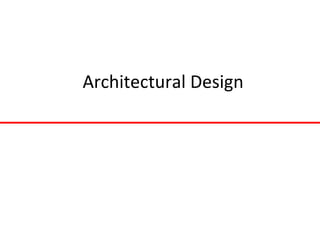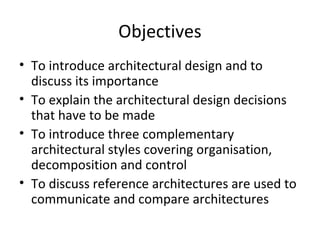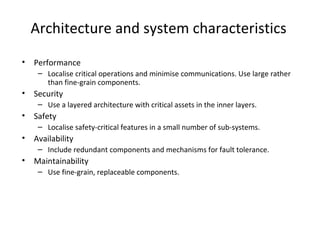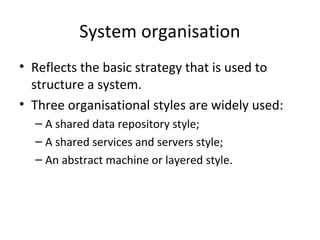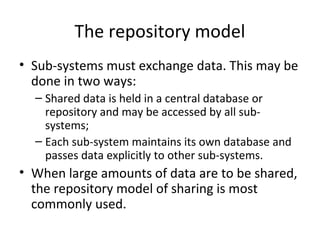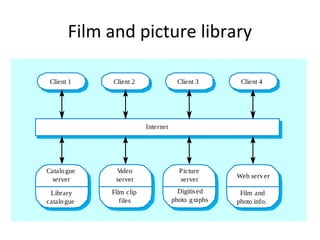The document discusses architectural design and introduces three common architectural styles for organizing systems: repository, client-server, and layered (abstract machine). The repository model structures a system around a shared central data store. The client-server model distributes data and processing across standalone servers and client systems. The layered model organizes a system into abstract layers that provide services to adjacent layers. Architectural design involves decisions about system distribution, structure, and interfaces to help achieve goals like performance, security, and maintainability.
